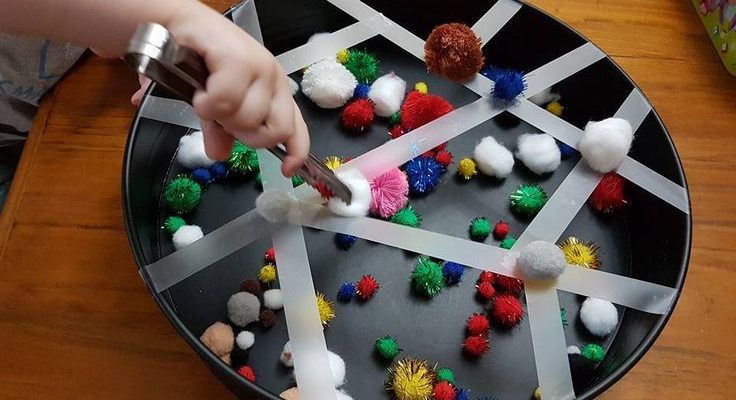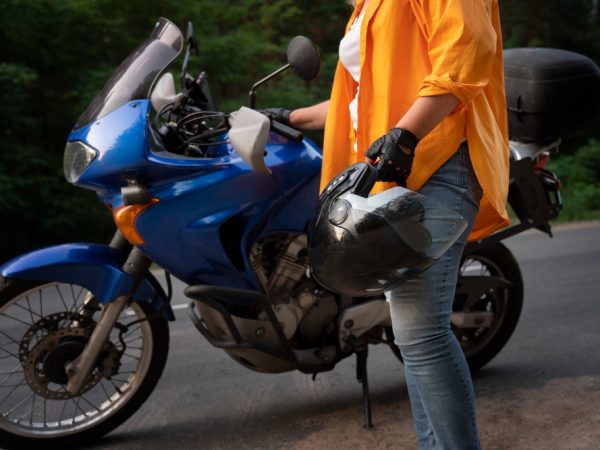Fine motor skills are the building blocks of childhood development, influencing a child’s ability to perform essential tasks like writing, buttoning clothes, and feeding themselves. Tuff trays offer a versatile and engaging platform for promoting these skills through hands-on activities. In this article, we’ll explore 10 sensational fine motor tuff tray ideas designed to ignite learning and enhance your child’s dexterity and coordination.
Fine Motor Tuff Tray Ideas: Sensory Sorting Station
Dive into a world of textures and colours with this sensory-rich activity. Transform your tuff tray into a sensory sorting station by filling it with a variety of materials such as rice, pasta, buttons, and pom-poms. Provide small containers or compartments for sorting based on colour, shape, size, or texture. As children engage in this activity, they will not only explore the sensory properties of different materials but also refine their fine motor skills. The act of picking up individual items and placing them into designated containers requires precise hand movements, strengthening hand-eye coordination and manual dexterity.
Fine Motor Tuff Tray Ideas: Playdough Paradise
Unleash your child’s creativity with a playdough paradise right in your tuff tray! Providing a selection of colourful playdough along with an array of tools like rolling pins, cookie cutters, and plastic knives transforms the tuff tray into a hub of imaginative play and fine motor development. As children manipulate the playdough, they strengthen the muscles in their hands and fingers, enhancing fine motor skills essential for tasks like writing and drawing. Furthermore, the act of shaping, moulding, and cutting playdough fosters creativity and imagination, allowing children to express themselves artistically.
Fine Motor Tuff Tray Ideas: Construction Challenge
Build, stack, and create in this construction-themed tuff tray activity! Transform your tuff tray into a construction zone by filling it with building blocks, LEGO bricks, or interlocking cubes. Encourage children to use their fine motor skills to construct towers, bridges, or intricate patterns. As they manipulate the blocks and pieces, children develop spatial awareness and hand-eye coordination, learning how to balance and arrange objects to create stable structures. Additionally, engaging in construction play fosters problem-solving skills as children experiment with different arrangements and solutions
Fine Motor Tuff Tray Ideas: Watercolour Exploration
Dive into a world of colour with watercolour exploration in your tuff tray. This activity offers a unique opportunity for children to develop fine motor skills while expressing their creativity through art. Simply place watercolour paper in the tuff tray and provide droppers or brushes for painting. As children dip their brushes into vibrant hues and glide them across the paper, they refine their hand movements and control, strengthening the muscles in their fingers and hands. The fluid nature of watercolours encourages a gentle touch and precise strokes, promoting dexterity and coordination.
Fine Motor Tuff Tray Ideas: Nature’s Treasures Sensory Exploration
Description: Delve into the wonders of nature with this sensory-rich activity. Explore the textures, shapes, and colours of natural materials like leaves, pinecones, and shells in a tactile tuff tray setting. Engage children’s senses as they manipulate and examine these treasures, fostering sensory exploration and fine motor development.
Pincer Practice with Pegs and Pom-Poms
Description: Develop the pincer grip and fine motor control with this engaging activity. Introduce clothespins or plastic tweezers alongside small objects like pom-poms or beads. Challenge children to pick up and place the items using their thumb and index finger, strengthening the muscles in their hands and fingers.
Letter and Number Hunt Sensory Activity
Description: Embark on a hunt for letters and numbers in this interactive sensory activity. Hide foam letters or numerals in a sensory material like rice or sand within the tuff tray. Encourage children to search for and identify the hidden symbols, promoting letter and number recognition while engaging their senses.
Underwater Adventure Fine Motor Fishing Game
Description: Dive into an underwater adventure with this fine motor fishing game. Fill the tuff tray with water and add magnetic letters or toys. Equip children with a magnetic fishing rod and challenge them to catch the items, refining hand-eye coordination and grip strength in a fun and aquatic setting.
Thread and Lace Creations for Fine Motor Skills
Description: Encourage creativity and fine motor development with thread and lace creations. Provide beads and laces or pipe cleaners for threading practice in the tuff tray. Watch as children thread and lace their way to colourful masterpieces, honing hand-eye coordination and concentration.
Frozen Excavation Sensory Challenge
Description: Embark on a frozen excavation adventure with this sensory-rich activity. Freeze small toys or objects in ice cubes and place them in the tuff tray. Equip children with tools like droppers or salt and challenge them to melt the ice to reveal the hidden treasures, promoting sensory exploration and fine motor skills.
Conclusion
Fine motor tuff tray ideas offer a wealth of opportunities for children to engage in hands-on learning while developing essential skills. By incorporating these 10 sensational activities into playtime, parents and educators can support the holistic development of children, setting them up for success in academics and everyday life.
FAQs
1. What age range are fine motor tuff tray ideas suitable for?
Fine motor tuff tray ideas can be adapted to suit children of various ages, but they are particularly beneficial for toddlers and preschoolers aged 2 to 5 years old.
2. How can I make fine motor tuff tray activities more challenging for older children?
To make activities more challenging for older children, consider increasing the complexity of tasks, using smaller or more intricate materials, or introducing elements of problem-solving or creative thinking.
3. Are fine motor tuff tray activities messy?
While some activities may involve sensory materials like rice or watercolour paint, they can generally be contained within the tuff tray, making cleanup easier. However, it’s always a good idea to supervise children during playtime and protect surfaces as needed.
4. Can fine motor tuff tray ideas be adapted for children with special needs?
Yes, fine motor tuff tray ideas can be adapted to suit children with special needs by modifying materials, providing additional support or sensory input, and tailoring activities to individual abilities and preferences.
5. How often should I incorporate fine motor tuff tray activities into my child’s routine?
Fine motor tuff tray activities can be incorporated into your child’s routine as often as you like, whether it’s daily, weekly, or as part of a structured learning environment. The key is to provide opportunities for hands-on exploration and skill development on a consistent basis.
Also read: Computer Icon Picture Power: Top 10 Images to Elevate Your Desktop














